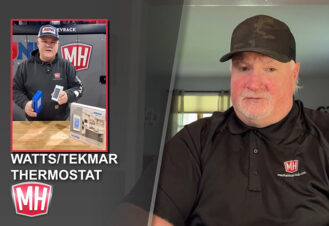Leading water heater manufacturers like Bradford White, Rheem and A.O. Smith spent many years designing and developing new technology to meet the energy-efficiency standards in the National Appliance Energy Conservation Act (NAECA). Since those standards went into effect last April 16, Contractors, wholesalers and distributors – as well as their residential and light commercial customers – have adjusted to the changes. Now, the manufacturers are catching their breath, and looking forward to the future.
“We will continue to it refine water heater technology,” said Carl A. Pinto, Jr., director of marketing for Bradford White Water Heaters in an interview with Plumbing Perspective. “In the years to come, water heaters may be considered a key component of a whole-house energy solution, rather than a stand-alone piece of equipment. In other words, contractors and homeowners will be focused on the overall plumbing and heating systems and how they interact with each other.”
A smooth transition
In addition to developing the new technology, the major manufacturers also invested significant resources in education and training programs. “Along with launching a new product line, we have also been educating customers and consumers in order to make this transition as smooth as possible,” said Stacey Gearhart, director of product and channel marketing for Rheem’s Water Heating Division, in a 2015 interview.
That focus on keeping contractors aware of the NAECA standards and what they mean to their plumbing and heating businesses has minimized market disruptions, according to Chad Sanborn, product marketing manager, Bradford White. “While the new standards affect manufacturers, contractors and distributors are still able to sell their existing inventory and are continuing to do so,” Sanborn said. “We did see an increase in orders prior to the deadline for the new standard.”
Noting that there has been little feedback from homeowners regarding the new standards, Sanborn said contractors can assure their residential customers of the high quality of water heaters manufactured under the prior standards.
Pinto said the biggest change under NAECA is that the new energy-saving water heaters take up more space in the home. “There has been an issue in many regional markets around the country, including older homes in California and Florida homes without basements,” he said. “That has been less of a problem in the Midwest where homes generally have more space to accommodate larger heaters.”
Sanborn added that contractors have come up with some creative solutions to address this challenge, such as installing two 40-gallon water heaters side-by-side to replace an outdated 80-gallon heater. “However, labor can be another issue because some of the new heaters require two installers rather than one,” he added.
A broad impact
The 2015 NAECA rules, set forth by the U.S. Department of Energy, mandate higher energy factor (EF) ratings on virtually all residential water heating products, including gas-fired, oil-fired, electric, tabletop, instantaneous gas-fired and instantaneous electric. However, the most dramatic changes are in larger capacity models, because the only technologies that meet the EF requirements over 55 gallons are electric heat pump water heaters and high-efficiency condensing gas water heaters.
The DOE estimates that the 2015 standards will result in approximately $63 billion in energy bill savings for products shipped from 2015-2044. The standard will avoid about 172.5 million metric tons of carbon dioxide emissions, equivalent to the annual greenhouse gas emissions of about 33.8 million automobiles.
As Sanborn said, “Homeowners will have a lot to gain from the NAECA guidelines with some saving hundreds of dollars per year in energy bills.” In addition, some technology, such as electric heat pump water heaters, may provide supplemental cooling and dehumidification benefits to owners.




Join the conversation: